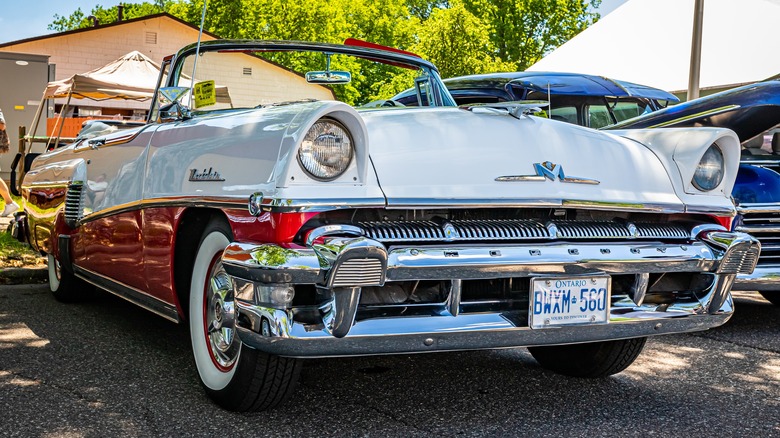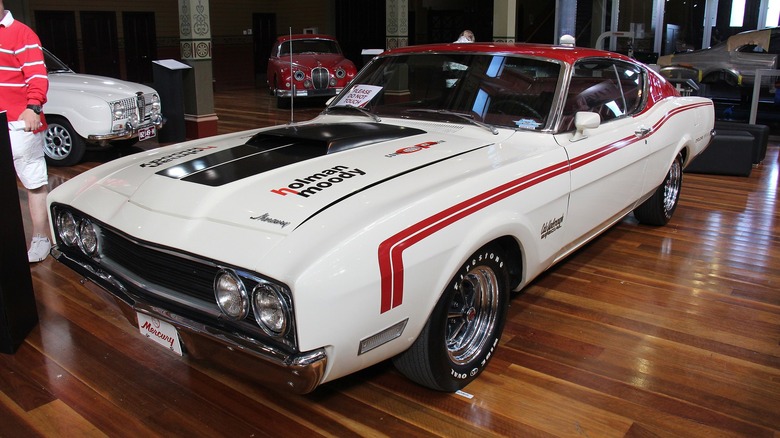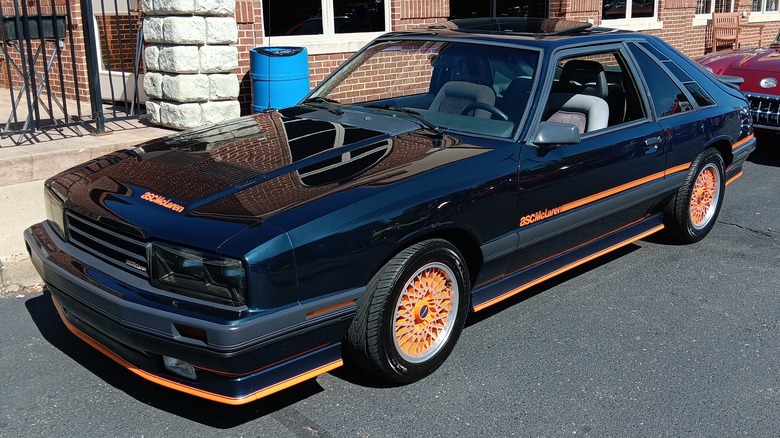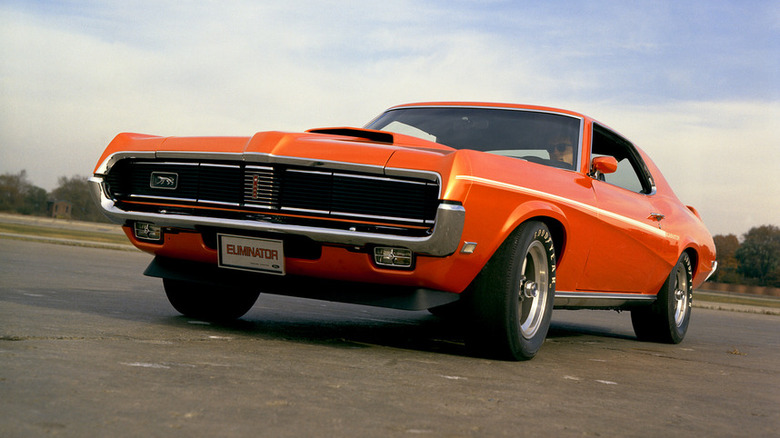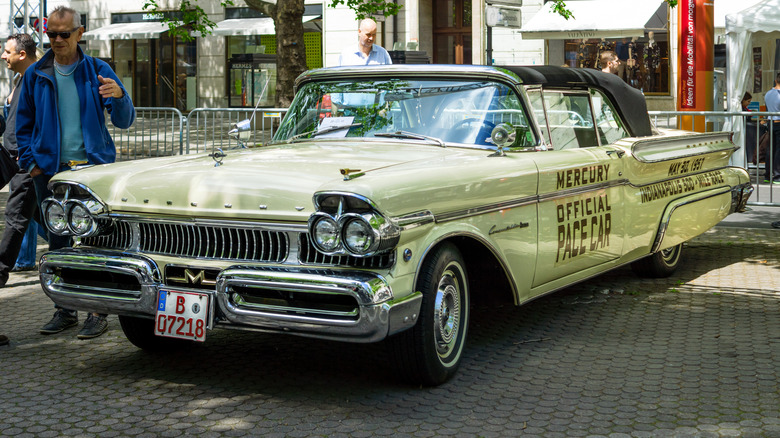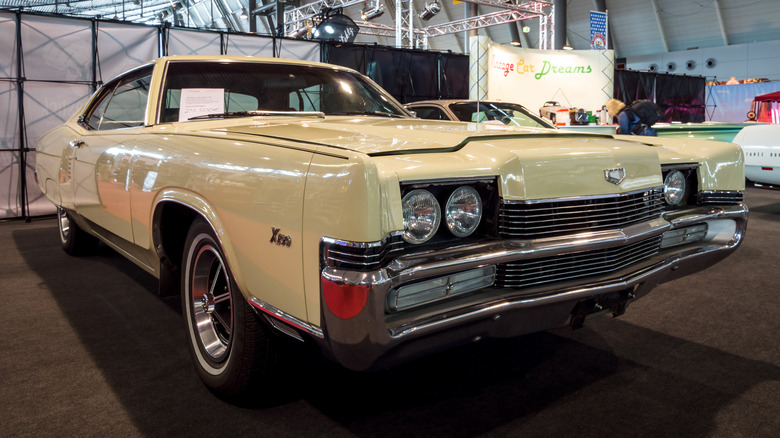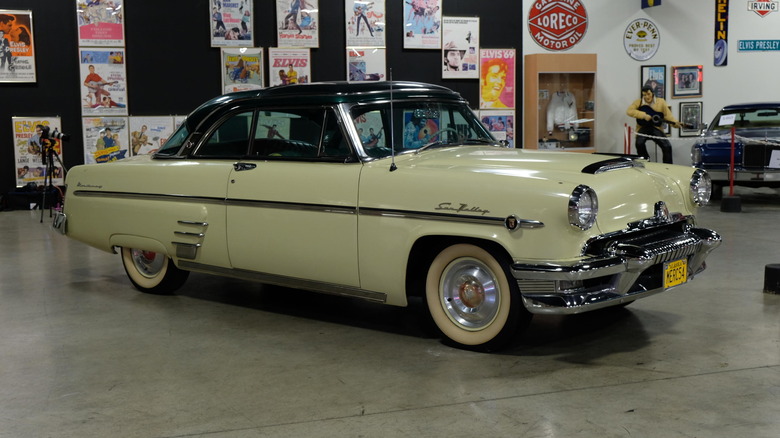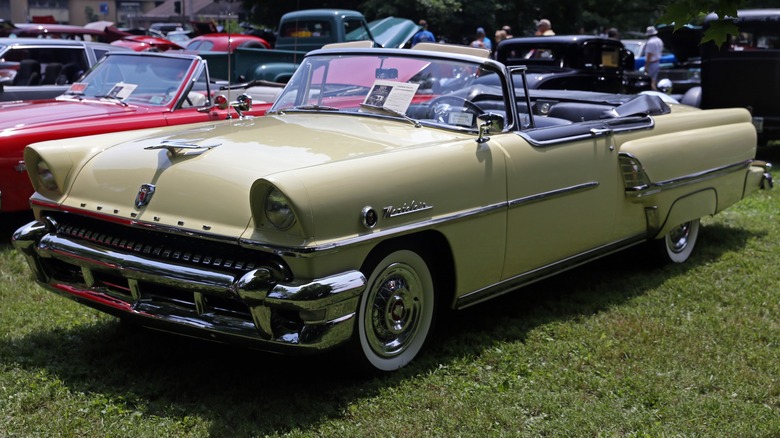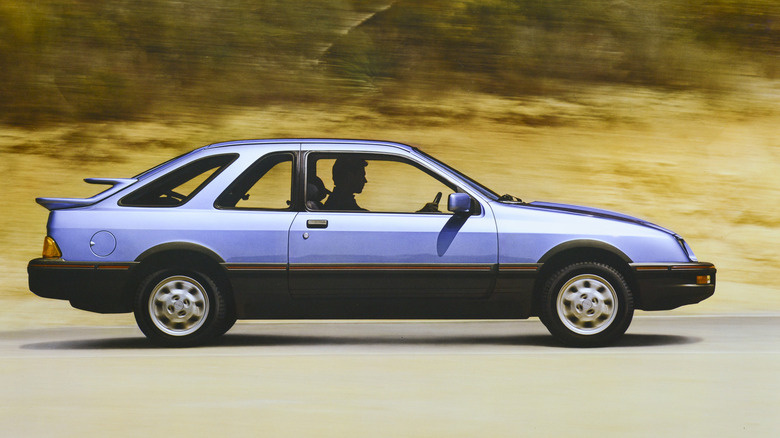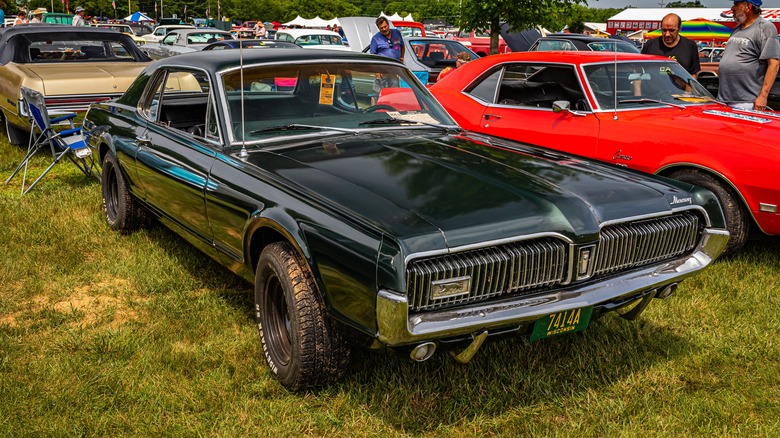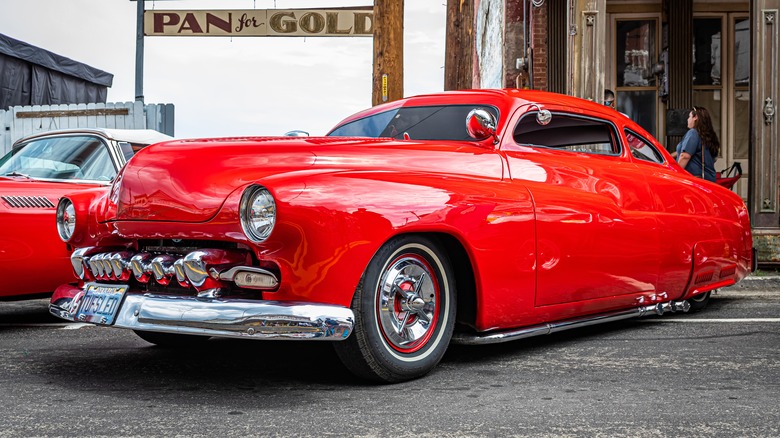10 Classic Mercury Models Worth Every Penny
Mercury was launched in 1938 as a mid-tier brand to flesh out Ford's lineup. Bosses had decided that there was too much of a gap between the most expensive Ford model and the base-spec Lincoln model, so Mercury would fill that gap. The Mercury Eight was the brand's first model, and was available in a variety of body styles. It would continue to be produced until the outbreak of World War II. After the war, Ford invested in a series of new models for Mercury in an attempt to rejuvenate the brand, and its efforts would be well rewarded.
The Mercury cars of the '50s and '60s proved popular with buyers, and today, many of the most collectible Mercury models hail from the era. However, long after those glory days were over, the brand remained in production, until Mercury was eventually axed by Ford as part of significant cost-cutting measures in 2011. By that time, the brand was a shadow of its former self, but that hasn't stopped plenty of collectors from continuing to appreciate the models from its peak. These 10 models retain fanbases today, and each is well worth their current values on the collector market.
Mercury Cyclone Spoiler II '69
In the late '60s, both Ford and Mercury were competing in NASCAR, and so needed separate homologation specials to meet the regulations of the era. For 1969, Ford unveiled the Torino Talladega, while its Mercury counterpart was the Cyclone Spoiler II. It featured a new front end for improved aerodynamics, but unlike many other homologation specials, there was no race-derived engine under the hood.
Ford had already homologated the racing engines that Mercury would use throughout the season, and so there was no need for Mercury to do the same. Instead, the Cyclone Spoiler II was fitted with a common 351 V8 engine. It was no slouch, but made the Mercury slightly less of a tire-shredding street machine than other homologation specials of the era.
Mercury only unveiled the car to meet regulations and seemingly made little effort to differentiate it from previous special editions. According to MotorTrend, some sales documentation for the car referred to it as a "Spoiler II," while one brochure referred to it as the "Cyclone Spoiler Sports Special." Confusingly, the decal on the side of the car simply read, "Cyclone Spoiler," with no mention of the II. It might have been churned out in haste by Mercury at the time, but the car's unique backstory alongside it's NASCAR heritage make it a noteworthy –- and arguably underappreciated -– classic today.
[Featured image by Sicnag via Wikimedia Commons | Cropped and scaled | CC BY 2.0]
Mercury Capri ASC/McLaren '85
Offered in both hardtop and convertible form, the rare Mercury Capri ASC/McLaren was produced for only a few years with backing from Mercury. The idea was originally conceived as the wife of engineer Peter Muscat was banned from parking her convertible Mercedes in certain parking lots in Ford's factory. It wasn't made by the Detroit company, and so had to be parked out of sight, yet there wasn't an equivalent Ford Motor Company model for her to switch to.
Originally, Muscat designed a convertible Mustang, but after Ford executives directed him to take up the idea with Mercury, a new donor car, the Capri, was selected. The car was manufactured by American Sunroof Company in partnership with McLaren, and featured a more upscale interior, unique suspension, and various small tweaks to the car's styling. The convertible was the first iteration to be designed, but it was later decided that a coupe would also be offered.
The trouble was, the car was significantly more expensive than a regular Capri, especially in convertible form. Buyers needed to shell out more than double the price of the base Capri in order to get the ASC/McLaren convertible, and so only a few hundred were made before the project was shelved. Today, their rarity means they have a cult fanbase, despite many enthusiasts overlooking the model.
[Featured image by Blasphemous Fool via Wikimedia Commons | Cropped and scaled | CC BY-SA 4.0]
Mercury Cougar Eliminator '69-'70
Unveiled in 1969 as the sole successor to both the XR7-G and GT-E, the Eliminator package gave the Mercury Cougar an extra performance punch. It was offered with a range of high performance powerplants, starting with the 351 V8 and topping out with the 428 Cobra Jet. A ram air package was also available for further performance gains. Two cars even received the Boss 429 engine as a special option.
Mercury built a total of 4,611 examples over a two year run, with production ending just as the muscle car market was beginning to tail off. Despite its performance credentials, Ford bosses opted not to race the Eliminator in competition to avoid crossover with the Mustang program, which was dominating the track at the time. Perhaps as a result of that, the Eliminator was always overshadowed by the fame of its Ford counterparts, but it remains an appealing collectors' car with a dedicated fanbase nonetheless.
Mercury Turnpike Cruiser Convertible '57
Mercury was selected to build the pace car for the 1957 Indianapolis 500 and subsequently built a road going version of the car. It was christened the Turnpike Cruiser Convertible, and 1,256 examples were built. Per Barrett-Jackson, Mercury had a reputation for creating conservative cars at the time it was selected for the race, and so used the opportunity to modernize its image.
The Turnpike Cruiser Convertible was decked out with cutting-edge technology and formed the halo offering in Mercury's line. Its headlights were a brand new design and were so bright that they were reportedly banned in multiple states, while the car's power seats featured a memory dial function. Its convertible top was also powered, and when it was down, the rear side window could lower automatically. At a steep retail price of more than $4,000, it's no surprise that the Turnpike Cruiser Convertible wasn't a big seller at the time, but it's a sought after collectors' car today.
Mercury Marauder X-100 '69
The Marauder name was first used on a Mercury in 1963, but it was resurrected for 1969. The Marauder X-100 was designed to be a sportier full-size car that combined luxury and performance, and it did a solid job of living up to its brief. The 429 V8 pushed out 360 horsepower and gave the car better off-the-line performance than many other similarly sized cars of the era, although with a 0-60 mph time of 7.8 seconds it wasn't able to keep up with the fastest muscle cars of the day.
Its handling was not quite as praiseworthy, but then that's hardly unusual for the era. The styling also stuck closely to the Marauder X-100's Ford-badged counterparts, although whether the Ford or the Mercury is the better looker is a matter of personal taste. Like many other Mercury specials, the Marauder X-100 wasn't a strong seller, but that makes it an exceptionally rare car to see today and that rarity ensures it remains a valued piece of the brand's history to its fans.
Mercury Sun Valley '54
A spin-off of the Monterey, the Mercury Sun Valley featured an innovative Plexiglas roof that could also be found on the Ford Crestline Skyliner. It's a rare model, with less than 10,000 examples sold over its short lifespan. Its rarity can be partly put down to the roof itself, which Bonhams describes as "more akin to that of a glass house" than a sunroof. It's safe to say that's not what Mercury's designers were aiming for. The car was also available in either yellow or green, which further limited its appeal among buyers.
However, the car's new-for-'54 engine and distinctively bright cabin have kept the few surviving examples that remain today in demand with collectors of the brand. The car is sure to draw attention at shows thanks to its unusual roof -– although, thanks to its greenhouse-like design, it's probably advisable to check the temperature forecast before committing to a faraway summer meet in the car.
Mercury Montclair Convertible '56
Another mid-'50s Mercury that remains collectible is the 1956 Montclair Convertible, an example of which appeared at a Bonhams auction in 2015. The model was the range-topping Mercury offering for that year, with 7,762 examples reportedly built. As well as receiving updated styling for the new model year, the Montclair also featured new safety features as part of Ford's "Lifeguard" system, including a distinctive deep-dish steering wheel.
Its safety advancements aren't what makes it attractive to collectors today though –- instead, it's the car's classic looks and smooth V8 engine. With more than 200 horsepower on tap, the car was decently powerful for its day, but most owners won't be driving anywhere in a rush. The Montclair Convertible is best enjoyed at cruising speeds, giving passersby plenty of time to admire its two-tone paint and plentiful chrome accents. It's not known exactly how many examples survive today, but it's likely to be a small fraction of the car's already limited original production run.
[Featured image by Mr.choppers via Wikimedia Commons | Cropped and scaled | CC BY-SA 3.0]
Merkur XR4Ti '85
Merkur was marketed as a Mercury sub-brand –- its name is derived from the German word for Mercury –- and during its short lifespan, its sportiest model was the XR4Ti. It was based on the European Ford Sierra XR4i, but was modified to meet U.S. regulations. Among those modifications was a new engine, with Ford borrowing the Mustang SVO's 2.3L turbo-four engine which was slightly down on power compared to its European counterpart. Still, with 175 horsepower on tap, it was no slouch.
The XR4Ti was offered from 1985 to 1989, but proved to be a sales flop. American customers weren't sold on the idea of a European-style sporty coupe from an American brand, as many preferring to stick with established European brands like BMW instead. A little over 42,000 examples were built before the car was axed, and today it remains a largely forgotten piece of the Ford Motor Company's history. For the few enthusiasts that remain keen to keep the remaining examples on the road, the car's unique backstory more than justifies its current affordable price on the resale market.
Mercury Cougar XR-7 '67
Seeing the success of the Ford Mustang, company bosses were keen to offer buyers a more upmarket, spacious alternative under the Mercury brand. That Mustang alternative came along in the form of the Mercury Cougar, which boasted the brand's signature mix of performance, European-influenced luxury, and competitive pricing. The XR-7 trim was the top initially offered by Mercury, with a plusher interior and insulation material to ensure that the cabin was as quiet as possible.
The front of the car was immediately recognizable thanks to its "shaver" grille, which extended to the headlight covers. Although Mercury did briefly take the car racing, it was marketed primarily on its luxury attributes rather than its power. It was successful at launch, with around 150,000 Cougars sold in 1967, but sales quickly tailed off over the following model years. Today it's sought after among collectors, although it has always lacked the universal recognition that its more common cousin, the Ford Mustang, continues to enjoy.
Mercury Eight '49-'51
Popularized by the emerging custom car movement, the Mercury Eight is another of the brand's most instantly recognizable cars today. Finding one in unmodified condition is now a difficult task -– most have been altered to some degree, with many owners following the lead sled formula. The car's flowing bodywork made it a natural candidate for alterations, and it helped that the car was relatively affordable to buy new too.
The most famous example of the car, the George Barris-built Hirohata Merc, sold for over $2 million at auction in 2022, making it the most expensive Mercury ever sold by a significant margin. For context, the next most expensive car was a Cougar XR-7 that had appeared in the James Bond movie "On Her Majesty's Secret Service" and sold for a little over $400,000. Most custom Eights are worth a tiny fraction of that amount, but stock or not, they're well worth the price of entry and remain one of the most sought after Mercurys ever built.
